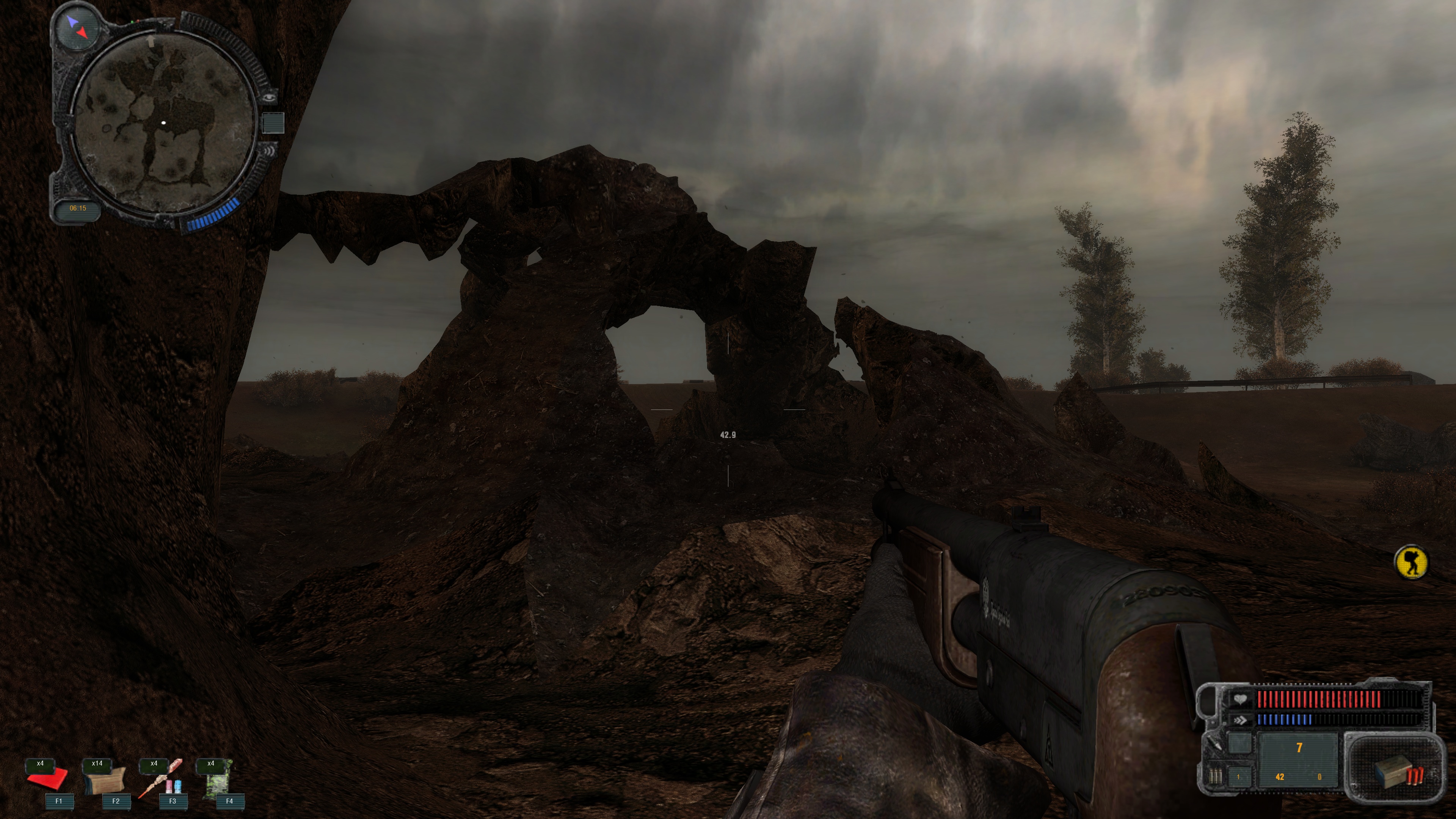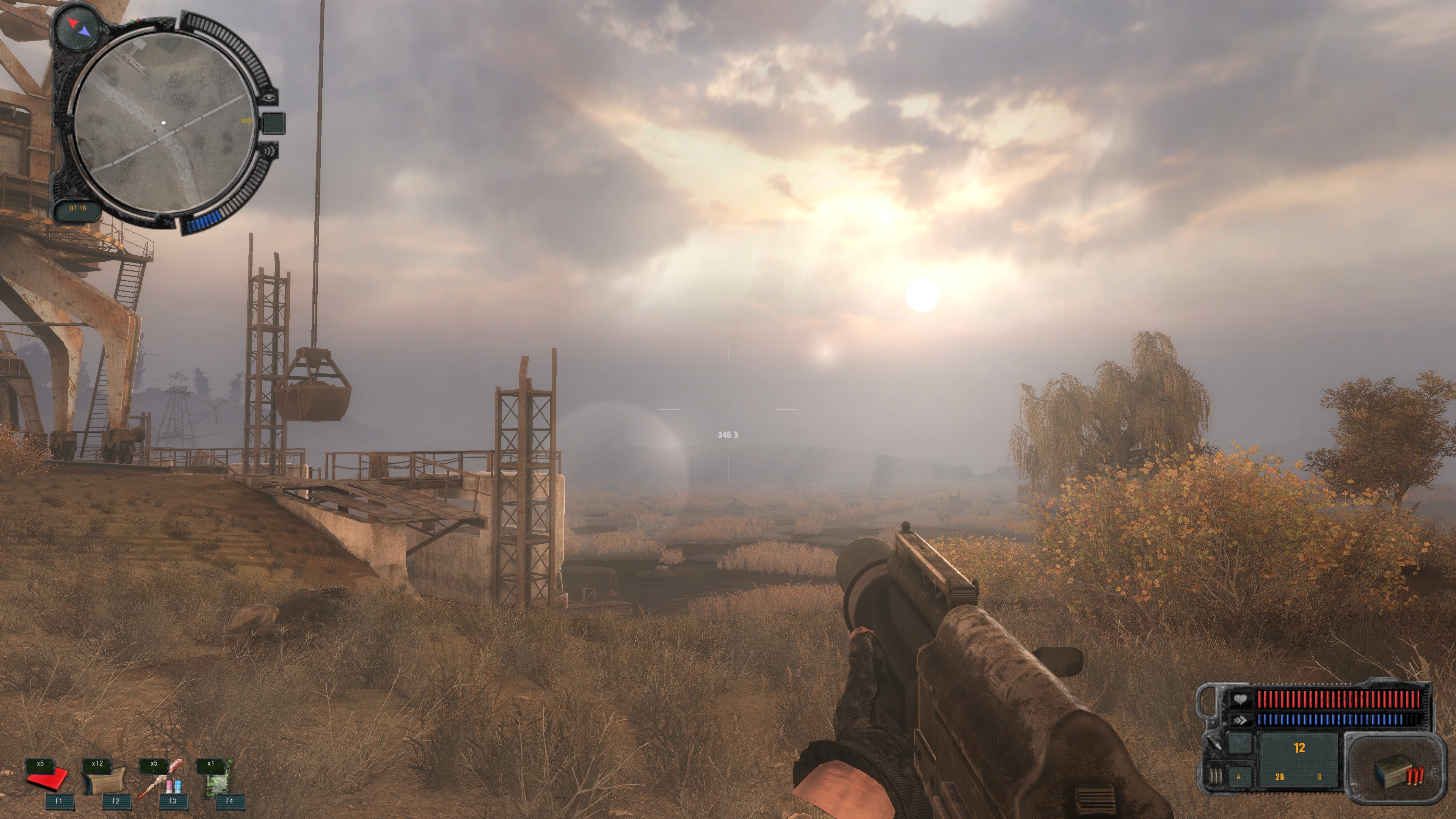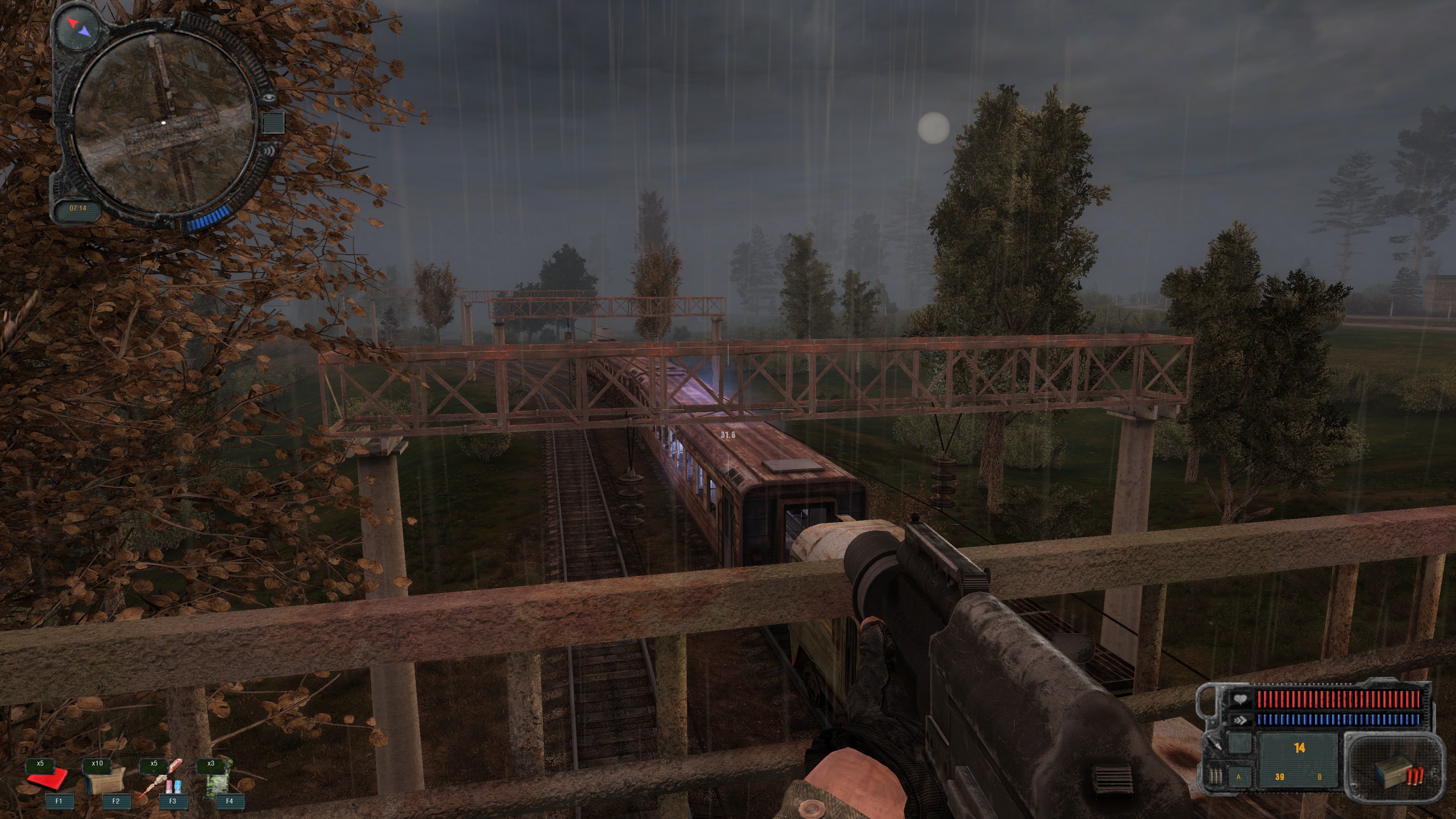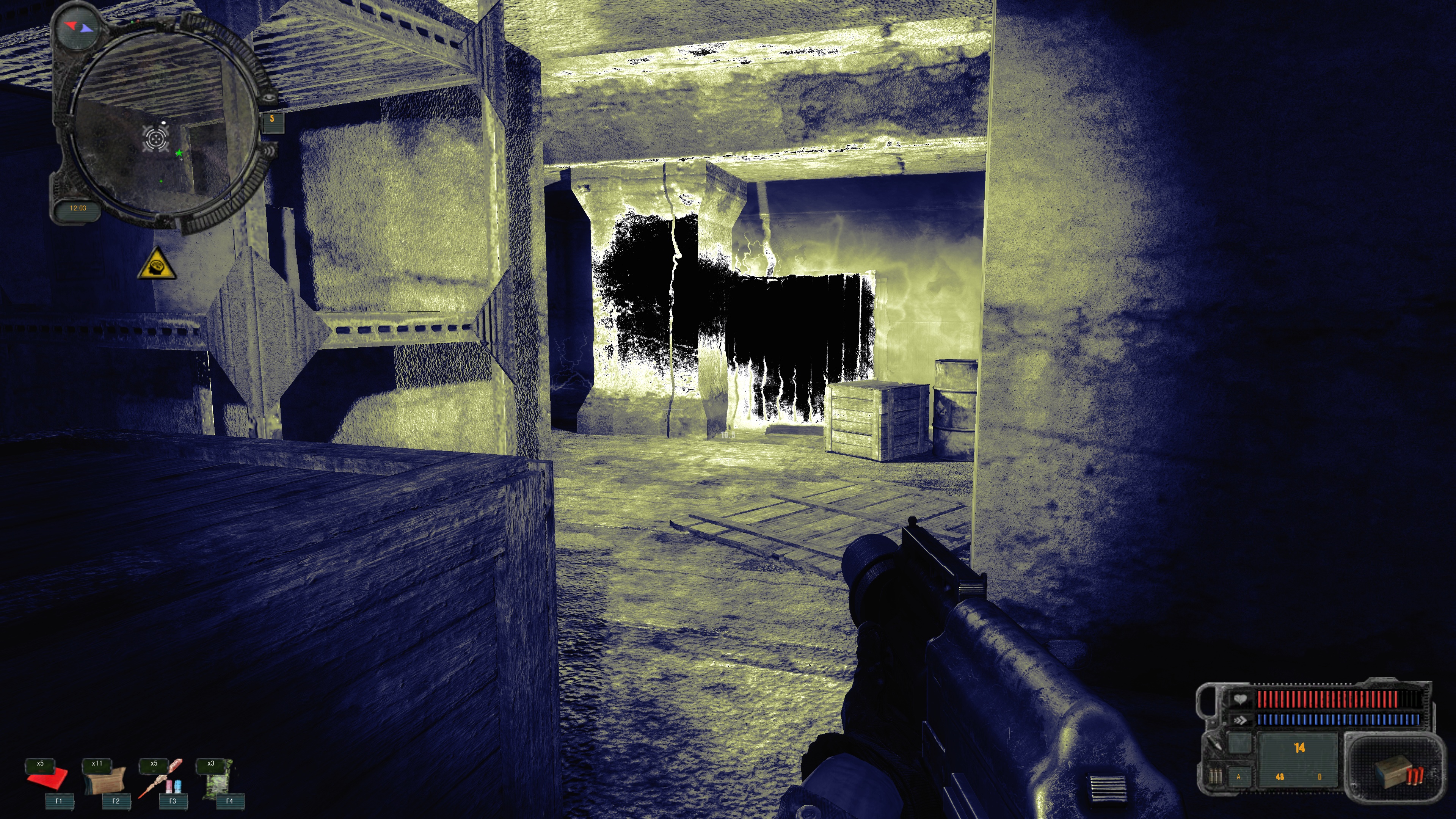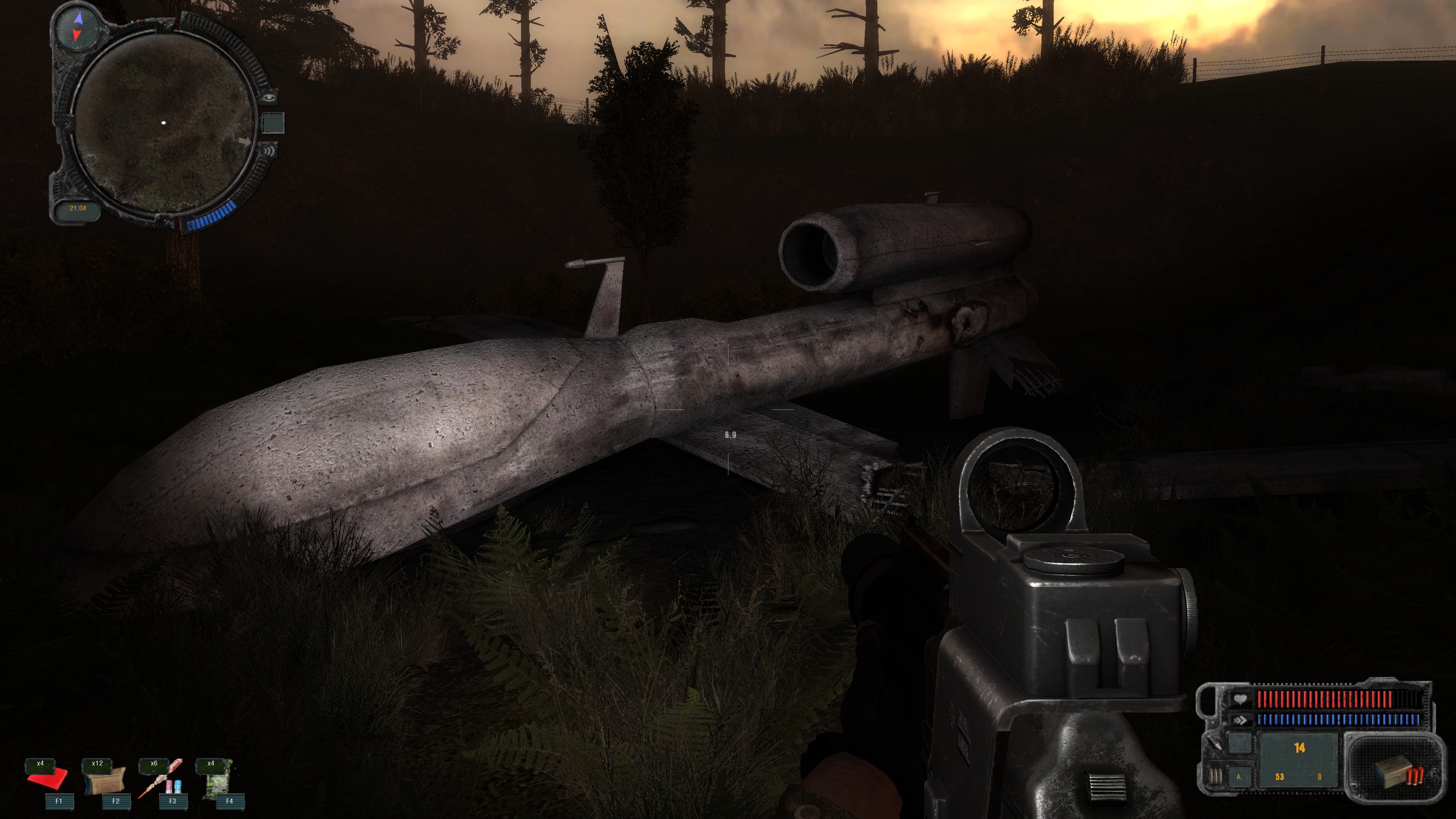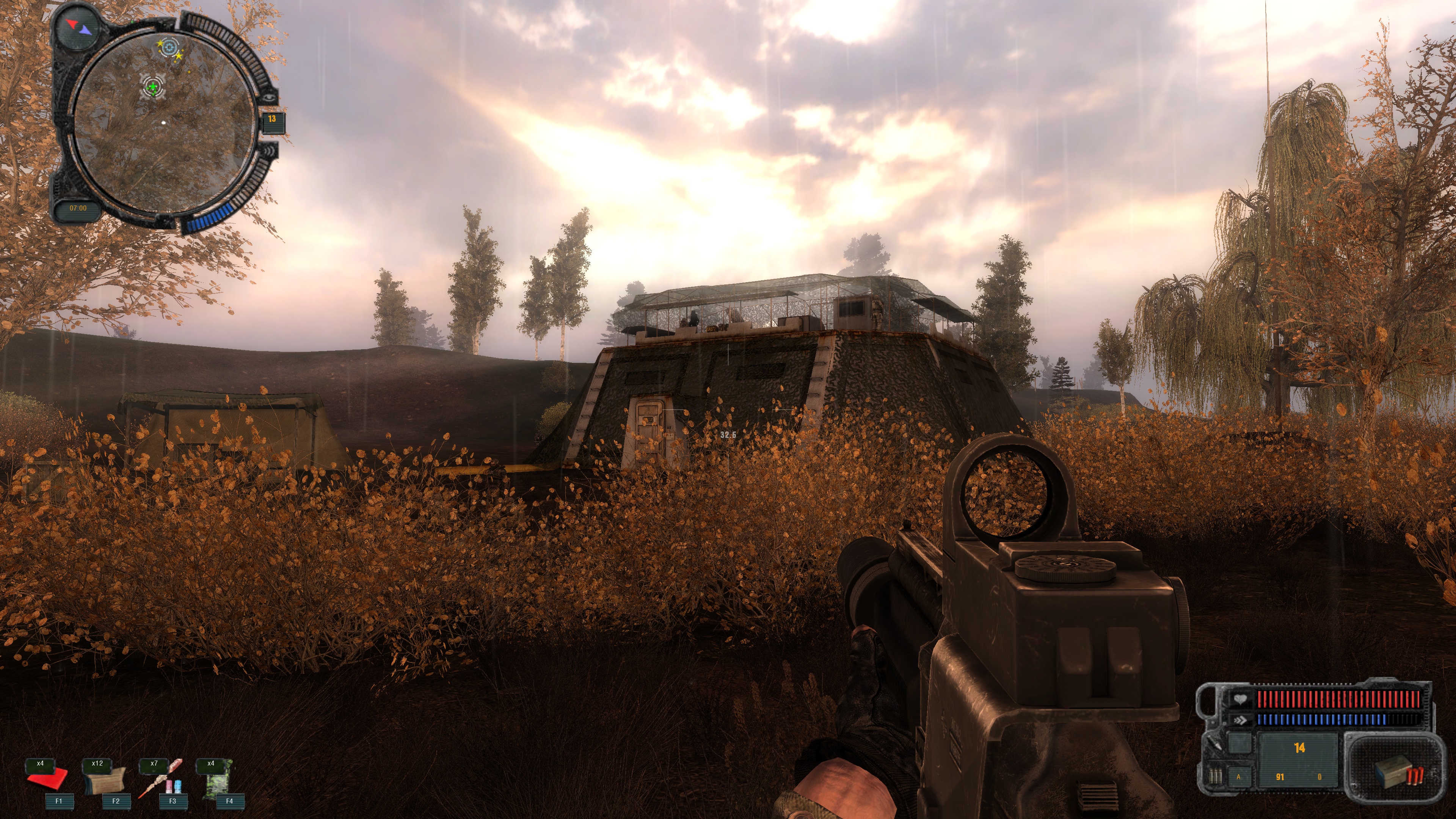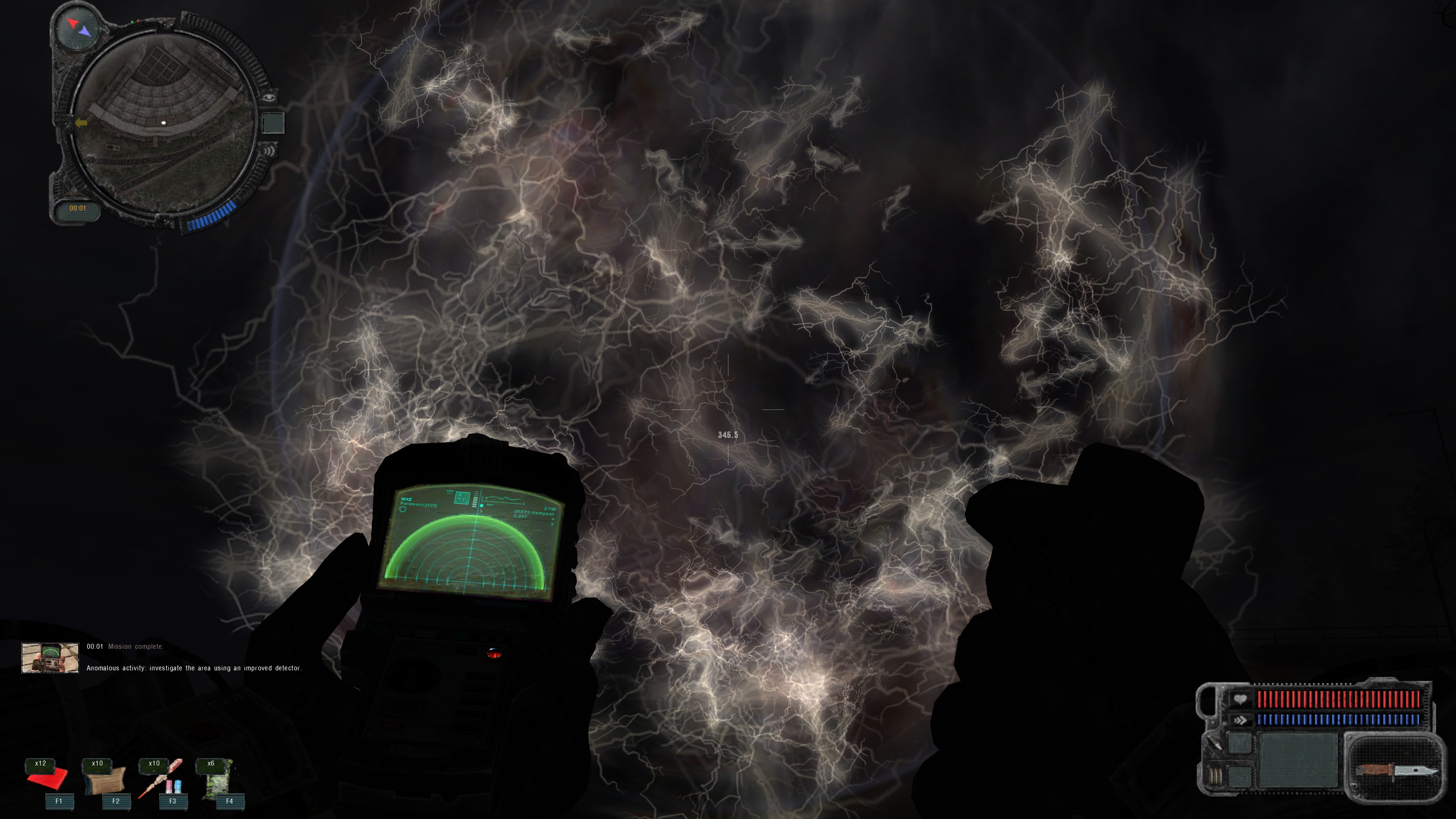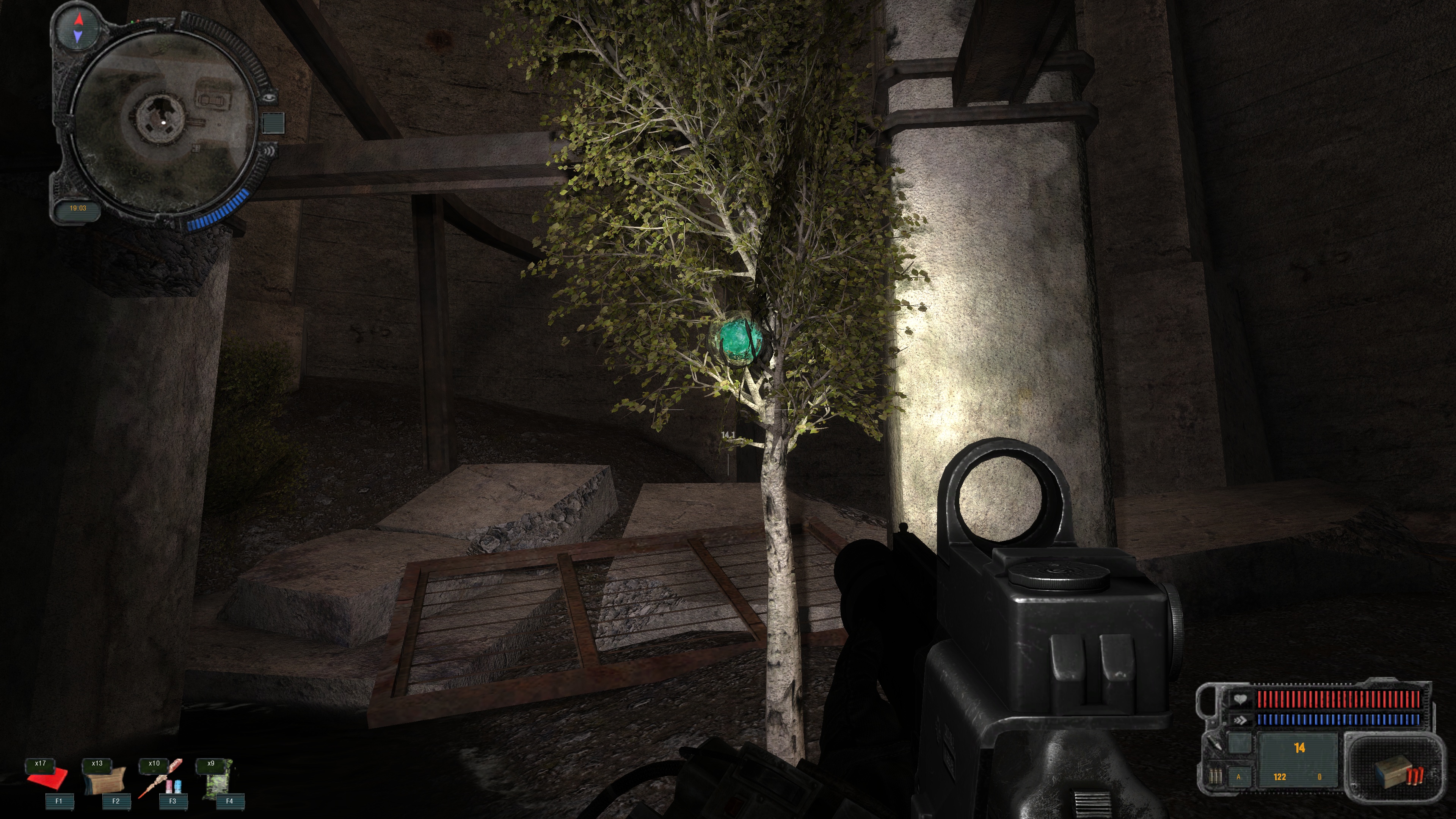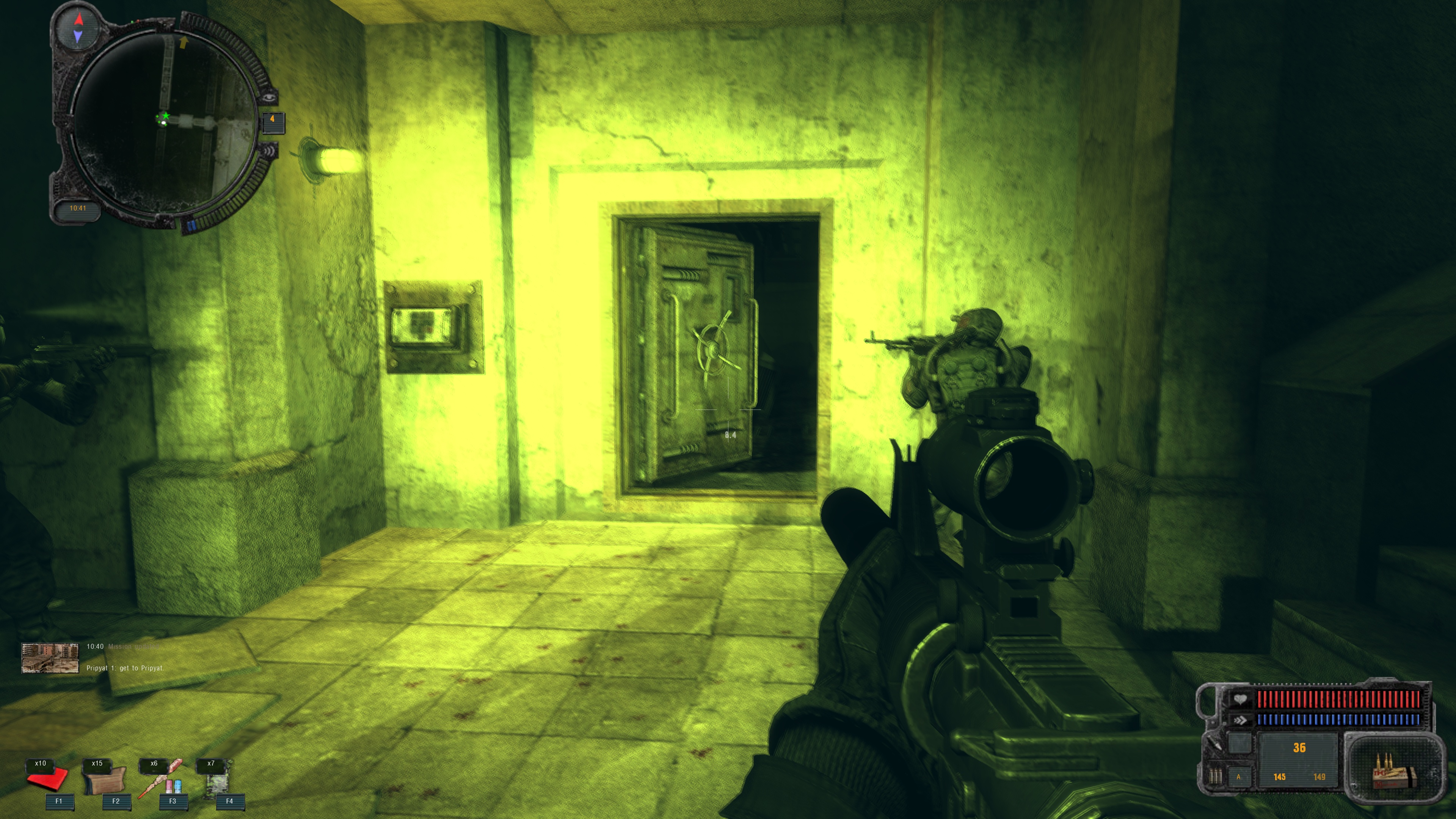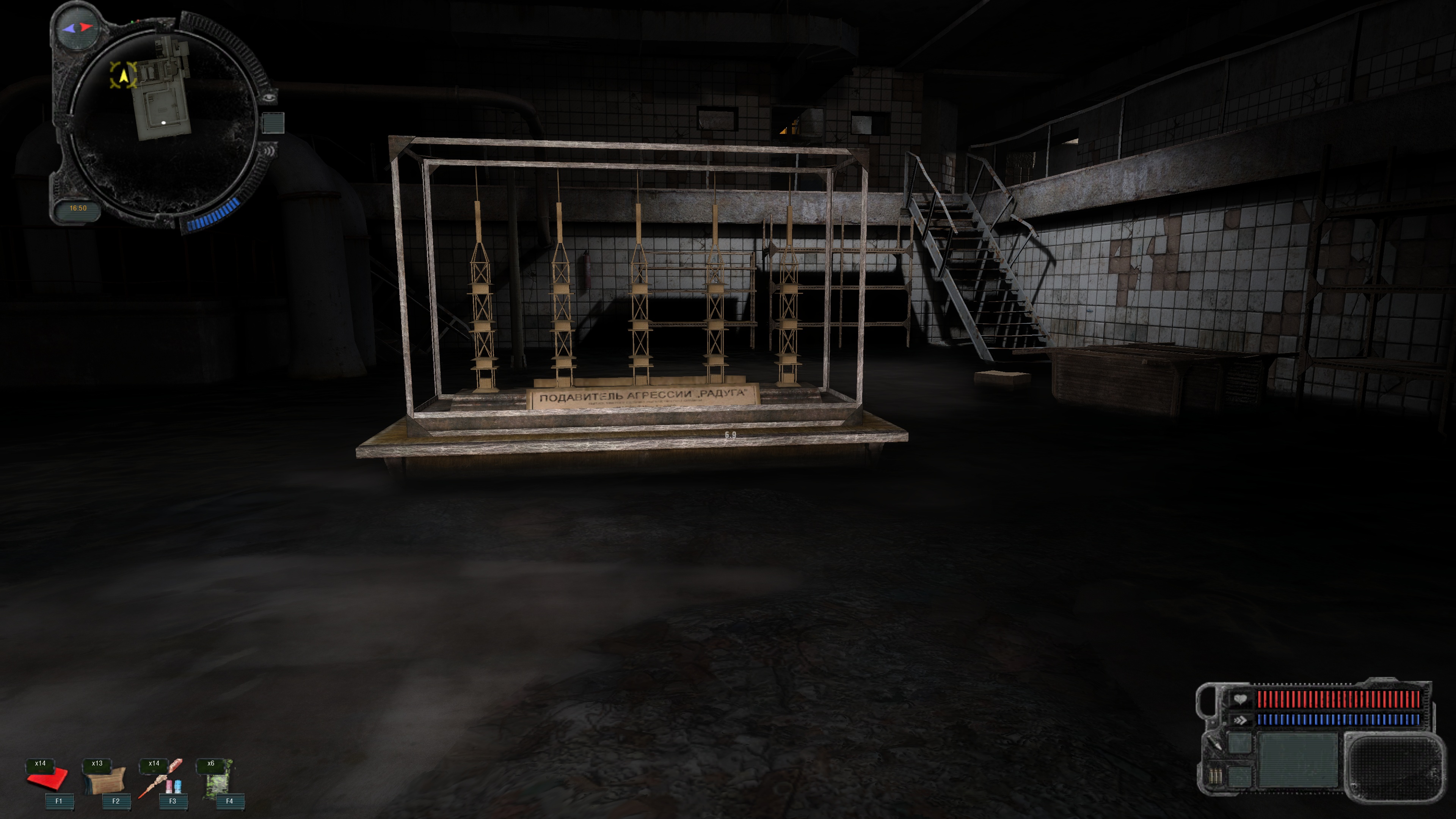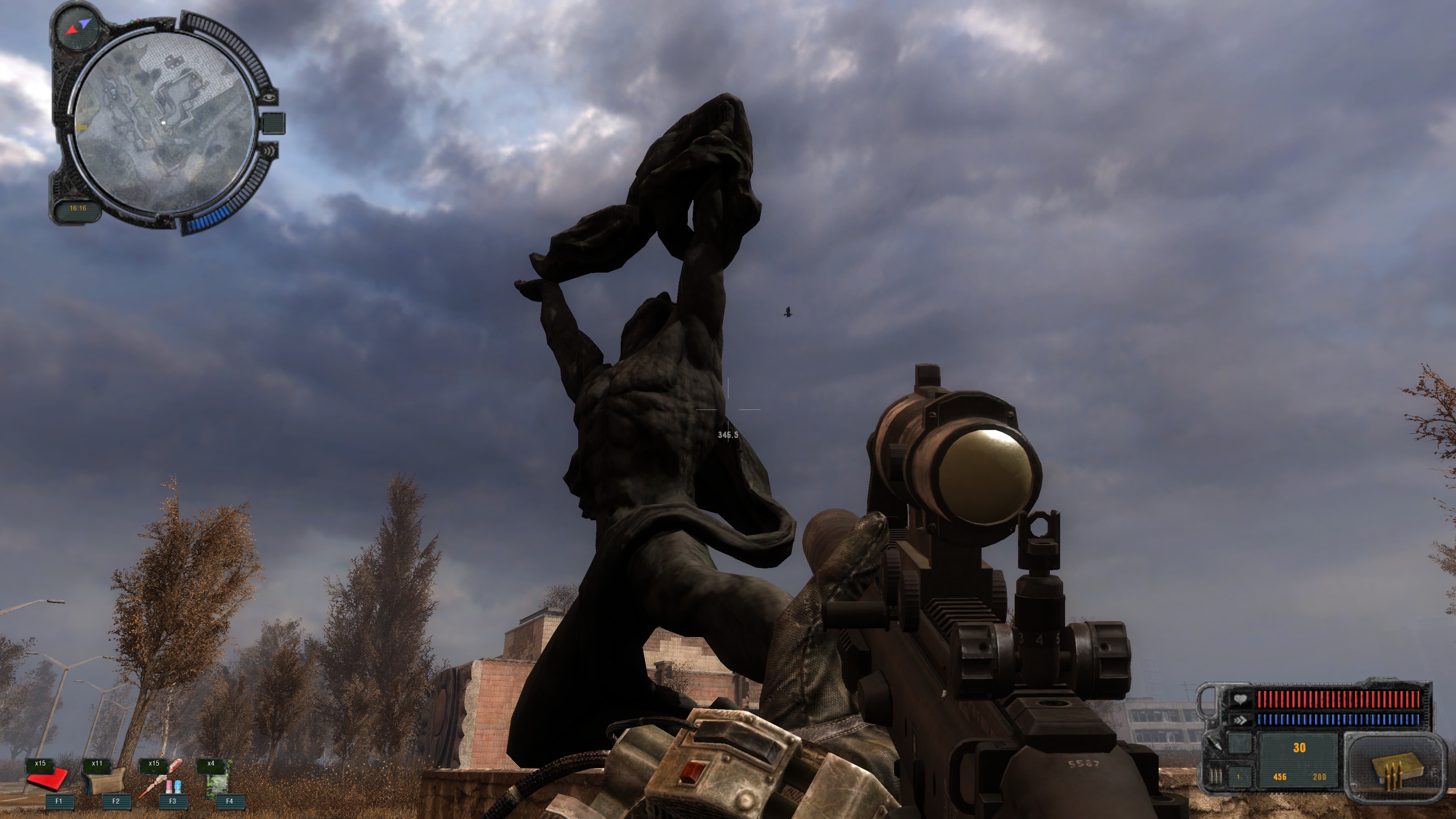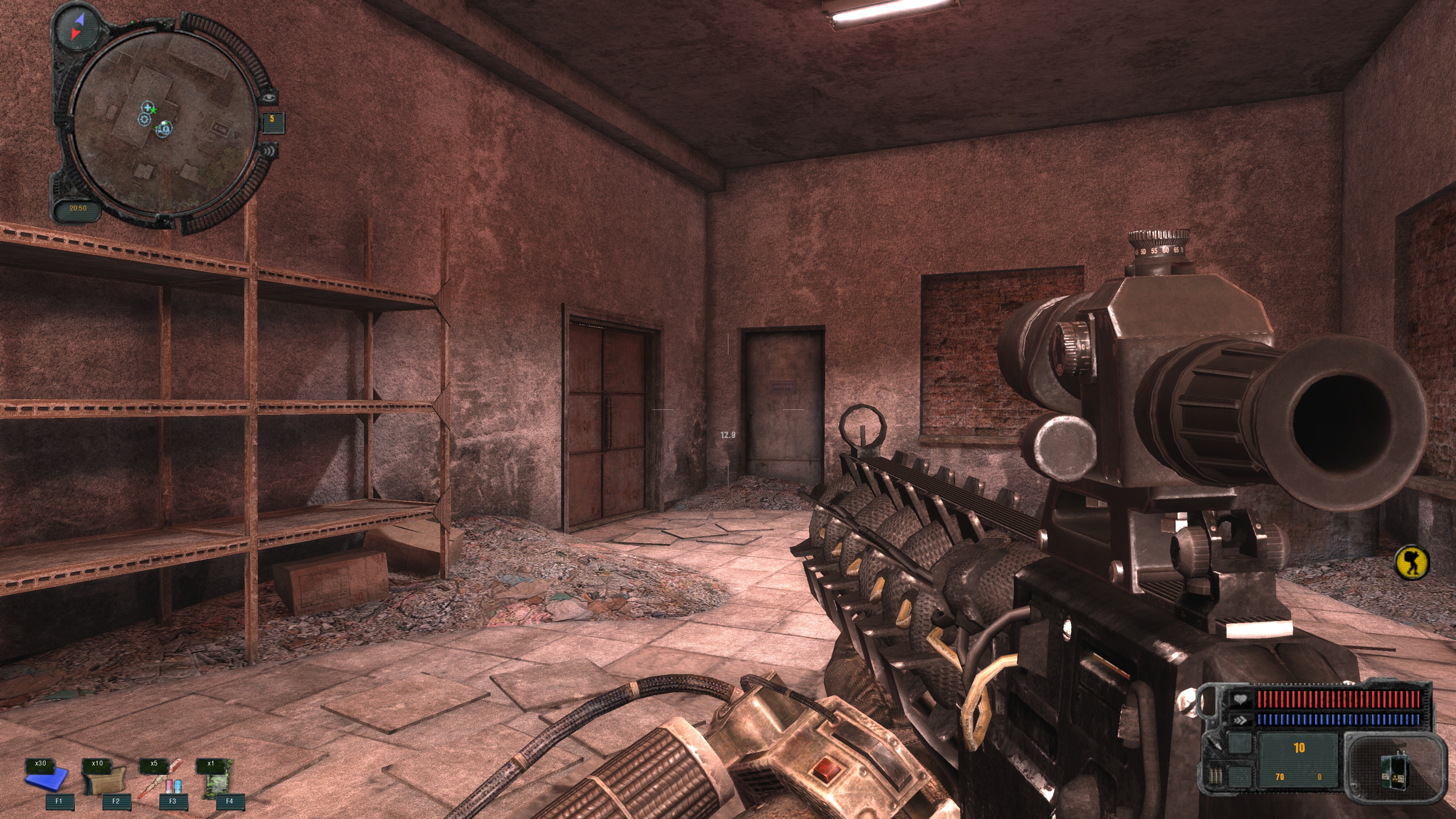S.T.A.L.K.E.R.: Call of Pripyat
Playtime: 21.8 Hours
Finished 03 October 2025.FYI - the "Enhanced" re-release of this game corrects the title of the game to the proper Ukrainian spelling "Prypiat", but the original release that I played uses the Russian spelling. I imagine a number of the in-game localized spellings (ex. Yanov -> Yaniv Station) may also be different.
Playthrough was done on Master difficulty, running Arsenal Overhaul 3.1 and Absolute Nature 3. I wanted to use Atmosfear as well, but the installer would just not work for some reason; maybe a compatibility or UI issue? I'm pretty sure I completed almost every side mission in the game, except for the Yanov Warehouses that require you to avoid selling Morgan's PDA to Owl. This includes giving the Oasis artifact to Ozersky, since it's basically useless to me anyway. In the ending slides, I got pretty much every "best" ending - pro-Free Stalkers in Zaton and faction-neutral in Yanov. The big exception is that Tarasov's squad in Pripyat died in the Monolith ambush, because they are virtually impossible to save on Master difficulty; not to mention that the insane grenade splash range with Arsenal Overhaul means that they'll all basically suicide when they toss them. Vano, Strider, Zulu, Lt. Sokolov, Kovalsky, and Strelok all made it out of Pripyat scot-free.
This is technically the end of the old Stalker trilogy, both by release and chronologically in-universe! I really enjoyed my time with these, and I'm kind of considering checking out Stalker 2 at some point - though some of the common complaints of that game worry me a bit.
Finally, the last game in the original Stalker trilogy! Given that this is the third iteration of the series on the X-Ray Engine, it feels far more mature and more stable than the other 2 before it. Performance-wise, outside of the typical hitches when loading parts of the map into memory, it runs smoother and with fewer random crashes than the other games. It's still not perfect, but I crashed probably around 5 times total throughout my entire playthrough and didn't experience any other significant visual or gameplay bugs beyond that.
This polish extends into the gameplay as well; lots of things that were tuned one way and the other between SoC and CS have seemingly settled into a nice medium for the final entry. Weapon and armor upgrades & modifications have settled into a proper upgrade tree instead of CS's backwards one (where you couldn't get the final upgrade unless you decided to get very specific predecessors) and static toolbox locations for the upgrade tiers instead of having to hope for the required flash drives in the stashes. They've also centralized the game around 2 technicians: Cardan in Zaton and Nitro in Yanov, instead of having like 5-6 of them with individual weapon specialties in CS. Artifacts are also more intricately balanced; unlike SoC, you can't run around with ~10 of them, and unlike CS, they no longer have completely busted effects. Some are still very powerful, like Goldfish with its +12kg weight capacity, but CS's busted balance is no longer a thing. Lastly, and by some respects most importantly, GSC has finally decided to give you 2 proper weapon slots rather than forcing a weapon/pistol like in the other games, making loadout management far better during combat with fewer trips to the inventory screen while people are shooting at you. Through just these general changes alone, CoP far outstrips the other games in terms of fundamental playability. I'd actually love to see all of these same systems applied to both SoC and CS, as I think they would make the other games straight up better than they are.
The other big change to the core experience of the game comes in the way the Zone's map is laid out and divided into different regions. While both the other games followed a relatively "linear" path with several smaller maps between the military Cordon up through Red Forest and Pripyat, CoP consists of 3 large zones: the swamps of Zaton, the vicinity of Yanov Station & the Jupiter plant, and a region of Pripyat. Each of these zones actually comprises several different key areas and environments, and altogether define an overall playable area comparable to the other games, especially when taking into account the density of actual points of interest. There's a central hub or base of sorts established within each of the zones: the Skadovsk in Zaton, Yanov Station near Jupiter, and the Laundromat in Pripyat where all the military remnants are holed up. Pretty much all of the important characters are gathered near these zones, and there are tons of different quests and even a number of questlines or subplots taking place that make the world feel a little bit more alive. Overall, the majority of each map is utilized quite fully by both the main quest and the sidequests, and the side content itself is also meaningful as the ending slides will talk about lots of the little things you did on the side as you went through the game. For example, a major subplot in Zaton involves various mysterious deaths and a bloodsucker lair; resolving the mystery not only gives you a constant drip-feed of medical supplies in your playthrough, it also means you save the residents of the Skadovsk from being slaughtered by mutants down the line.
However, with all of the big enhancements to the game come a sizeable list of sacrifices made along the way. Perhaps most notably, the actual main story of this game is extremely short: as Major Degtyarev, you are sent into the Zone to examine 5 crashed helicopters that made up a failed military operation to reach its center. If you really just follow the instructions to the letter and beeline to each of the helicopters, you can finish the game very quickly provided you know what you're doing well enough to survive the combat encounters along the way. Following the investigations, there are complusory missions in Pripyat before the final evacuation; yet even those are fairly short, probably taking less than 5 hours total throughout my playthrough. The game relies heavily on the side content to drag the playtime out to the length of its predecessors. However, the added irony of this is that the world as a whole only really feels meaningful until you've finished all the side missions; there is only a single repeatable mission in the game to supply artifacts to Beard at the Skadovsk, and with certain decisions even this option becomes unavailable. Although you're given the option to stay in the Zone post-evacuation, there is very little for you to do other than farm respawning artifacts and to kill the occasional mutants or bandits.
Another side effect of the way the main storyline and the world map is split into fewer large regions is a serious lack of large complexes & combat encounters, with only a few notable exceptions. The previous games had no shortage of vast underground complexes like the Agroprom Underground, X-18, X-16, etc. that exemplified the oppressive atmosphere that Stalker is truly capable of, while CoP is limited to a small facility in Zaton, X-8 (which is fairly small in itself, though with great atmosphere), and the Pripyat Underground sequence which you undertake with a full, heavily-armed crew. The final controller at Agroprom in SoC is legitimately terrifying, yet nothing in CoP can even hold a candle to that. Even when considering large combat encounters, CoP is limited to the Monolith ambush, the Pripyat Service Center shootout against the Monolith and the aforementioned Pripyat Underground mission, alongside the final Evacuation sequence. For pretty much anything else, it's rare to face off against more than a small squad of heavily-armed enemies at once. There's no insane Cordon shootout, no battle at Red Forest, and certainly nothing like SoC's ending sequence at the CNPP (though I admit, this one was a bit overdone). There's less excitement, fear, and suspense in this game overall; even the initial caution I had at Pripyat turned into a degree of boredom once I realized that the city actually just didn't spawn that many enemies. I appreciate not getting sniped out of nowhere every 5 feet, but having something to point my gun at could be nice.
All in all, the game does still feel a bit incomplete, its massive potential still constrained by time and deadlines. The emptiness of Pripyat, the fact that you get calibration tools with only 2 or 3 big missions left in the game, and with no long-lasting things to do in the Zone, all point to a heavily constrained experience most likely based around decisions to streamline the gameplay. The faction system is another victim of this, actually - the Freedom and Duty factions now are comprised of just a few dudes hanging around the opposite sides of Yanov Station and are not alluded to anywhere else aside from occasional patrols. Gone are the exclusive faction-specific missions and plotlines of SoC, and the intricate faction & territory system of CS have also been axed; now you just get to choose who you turn some random intel to in order to decide your loyalty. I understand why this was necessary from a design perspective, especially given how broken CS's systems were, but it's a bit sad to see such an important part of the games get relegated to the sidelines like this.
To not end things on a bad note, I can definitely say that despite the "shortcomings" I've listed above, I loved this game and would actually consider it the best of the trilogy, simply given how much better the fundamental gameplay is. Weapons and gear are super fun, especially with Arsenal Overhaul, and I had an incredible time stomping around with my super tanky exoskeleton and SCAR + Gauss rifle towards the last few hours of the game. Although this game theoretically lacks "radiant" quests, the existing sidequests are interesting, varied, and far better than random mutant kill quests or artifact hunt quests anyway (sorry Beard). I could see myself playing this game again sometime in the distant future; I suppose that goes for all 3 of the games though! Though for now, I think Stalker 2 may be next in line whenever I get the Stalker itch again.
